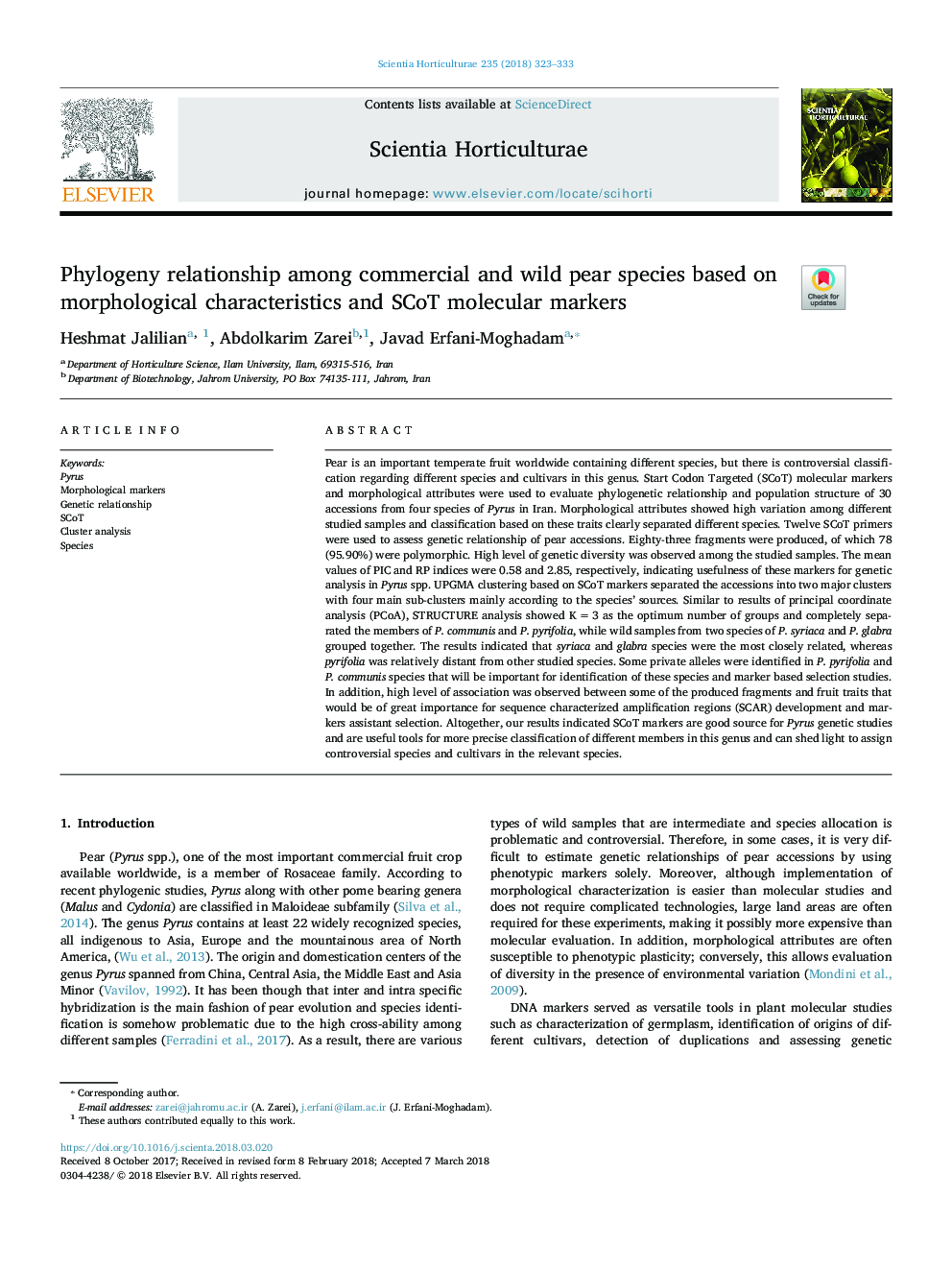| کد مقاله | کد نشریه | سال انتشار | مقاله انگلیسی | نسخه تمام متن |
|---|---|---|---|---|
| 8892707 | 1628763 | 2018 | 11 صفحه PDF | دانلود رایگان |
عنوان انگلیسی مقاله ISI
Phylogeny relationship among commercial and wild pear species based on morphological characteristics and SCoT molecular markers
دانلود مقاله + سفارش ترجمه
دانلود مقاله ISI انگلیسی
رایگان برای ایرانیان
کلمات کلیدی
موضوعات مرتبط
علوم زیستی و بیوفناوری
علوم کشاورزی و بیولوژیک
دانش باغداری
پیش نمایش صفحه اول مقاله

چکیده انگلیسی
Pear is an important temperate fruit worldwide containing different species, but there is controversial classification regarding different species and cultivars in this genus. Start Codon Targeted (SCoT) molecular markers and morphological attributes were used to evaluate phylogenetic relationship and population structure of 30 accessions from four species of Pyrus in Iran. Morphological attributes showed high variation among different studied samples and classification based on these traits clearly separated different species. Twelve SCoT primers were used to assess genetic relationship of pear accessions. Eighty-three fragments were produced, of which 78 (95.90%) were polymorphic. High level of genetic diversity was observed among the studied samples. The mean values of PIC and RP indices were 0.58 and 2.85, respectively, indicating usefulness of these markers for genetic analysis in Pyrus spp. UPGMA clustering based on SCoT markers separated the accessions into two major clusters with four main sub-clusters mainly according to the species' sources. Similar to results of principal coordinate analysis (PCoA), STRUCTURE analysis showed Kâ¯=â¯3 as the optimum number of groups and completely separated the members of P. communis and P. pyrifolia, while wild samples from two species of P. syriaca and P. glabra grouped together. The results indicated that syriaca and glabra species were the most closely related, whereas pyrifolia was relatively distant from other studied species. Some private alleles were identified in P. pyrifolia and P. communis species that will be important for identification of these species and marker based selection studies. In addition, high level of association was observed between some of the produced fragments and fruit traits that would be of great importance for sequence characterized amplification regions (SCAR) development and markers assistant selection. Altogether, our results indicated SCoT markers are good source for Pyrus genetic studies and are useful tools for more precise classification of different members in this genus and can shed light to assign controversial species and cultivars in the relevant species.
ناشر
Database: Elsevier - ScienceDirect (ساینس دایرکت)
Journal: Scientia Horticulturae - Volume 235, 17 May 2018, Pages 323-333
Journal: Scientia Horticulturae - Volume 235, 17 May 2018, Pages 323-333
نویسندگان
Heshmat Jalilian, Abdolkarim Zarei, Javad Erfani-Moghadam,